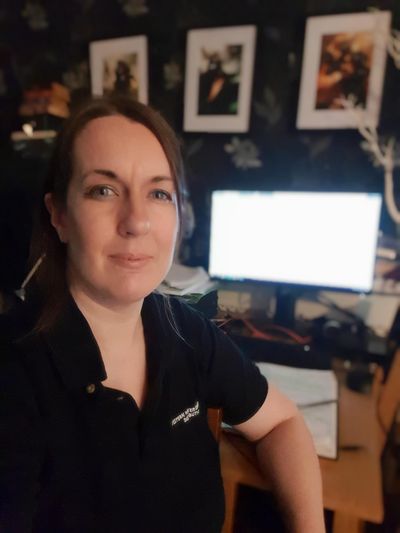Talking women in engineering with WPD planner Pollyanna Jones
WPD Planner Pollyanna Jones, based in Birmingham, talks about her experience in the industry and what needs to happen next to encourage more women:

What does your job involve?
I design new electricity connections. I also carry out assessments for low carbon technology. Other projects that I work on include Diversions, Point of Connection Schemes, Service Alterations, and Disconnections. When I am allocated a project, I help the customer through their journey with WPD, to make sure they have a positive experience of what may be a stressful project for them. This may involve site meetings, video calls, or phone calls and emails to help get their design right, while working to tight deadlines.
How long have you been at WPD?
I started as a trainee project manager with Eon in 2007 which involved learning how to deliver schemes that had already been designed and quoted. I also went to college one day a week to gain an ONC in Electrical Engineering. When I started working for WPD, my role changed to one that was based on designing and quoting small schemes such as service alterations and single phase connections, helping our customers to the point of delivery. As I advanced to my current role, the focus on operational work shifted to one more focussed on design. I’ve received training in switching on the network, faults, and other operational tasks such as fitting metres. It’s important to understand how the network operates in order to design a network in a sensible way.
Why did you choose a career in engineering?
I’ve always been around engineering. I learned to weld, use a CAD machine, use basic hydraulics, and carry out some vehicle repairs in my father’s workshop. A close family friend worked on aeronautical engineering, and automotive projects such as the original Land Rover, and the Thrust 2 land speed record vehicle. I enjoyed spending time with him, learning how an idea could be transformed through designs into something amazing, and wanted to be a part of that. I’ve always loved science and understanding how things work, so when the opportunity came up to apply for a role that would allow me to learn new skills and work on the electricity network managing projects, I jumped at the chance.
What can be done to encourage more girls to consider a career in engineering?
Interest needs to be sparked from a young age. Children need role models who can inspire them to believe that engineering is something that anybody can do, as long as you work hard and go for it. In a company, we all need positive mentors to help guide and support our careers. Women entering the industry need to feel they are valued just as much as their male colleagues, that there is a pathway for progression, and that their input is genuinely respected.
How encouraging is the work that is being done at WPD to attract and retain more female engineers?
WPD’s involvement with WISE is very exciting. I am looking forward to seeing how WISE and the work of our Directors will filter down through WPD to show that we are committed to making positive change, and for WPD to shine as an example to inspire other companies. Attracting and retaining more female engineers not only helps with the problem of a skills gap, but work around this will improve morale, which impacts very positively on a company in lots of ways.
- About Us
